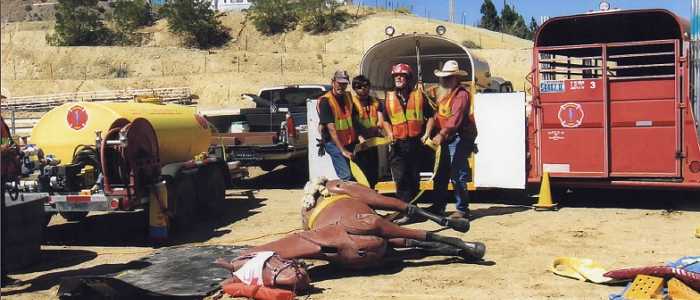|
|
LRTC Technical Large Animal Rescue Team
JEEP RESOURCE GUIDE AND
EMERGENCY WINCH PROCEDURES
|
Updated July 30, 2022
Garage location: Stagecoach, NV
WINCHES CAN BE DANGEROUS!
|
This information sheet series discusses critical issues relating to utilizing power winches. Examples include the 8,500 Lb. Jeep winch and the 10,000 Lb. Speed Mount Winch.
|
|
A failure in a winching system can be fatal.
The driver of this fire engine was killed when an anchor point failed and the cable and shackle flew through the windshield.
|
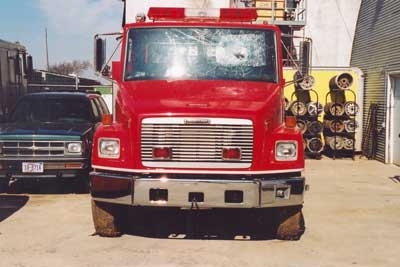
|
WINCH PROCEDURES
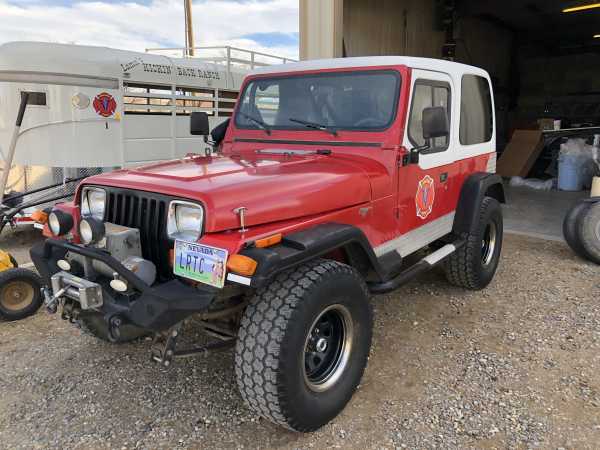
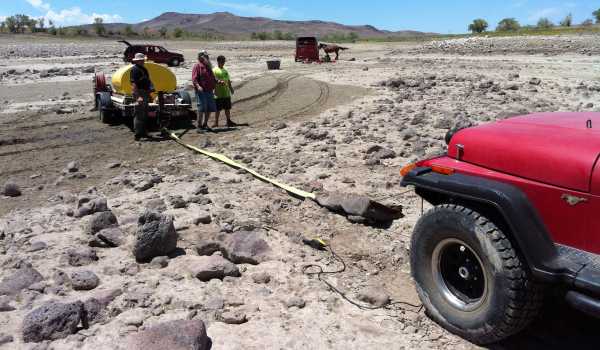
|
This information sheet is primarily intended for persons associated with or working with the LRTC Emergency Response Team, however the information may be useful to other groups or private individuals who may wish to equip a Jeep or similar four-wheel-drive vehicle and may be involved in emergency winching operations.
Everyone working with or near a strain loaded winch and the equipment described below should always exercise common sense, caution and safe practices. The descriptions provided below are for basic orientation and familiarization and are not a substitute for personal responsibility when working with and around loaded power equipment.
All equipment utilized in a winching operation must be designed and rated for the service these components are being used for, including the rating of the cable, hooks, shackles, snatch blocks, etc. Most injuries and fatalities occurred as a result of equipment failure.
|
|
The following inventory is carried on the Jeep.
|
- Tailgate compartment
- OSHA first aid kit
- Water cache (includes energy bars)
- Survival Pack
- Winch Accessory Kit
- 14 ft. logging chain with hooks
- 2) 20 ft winch straps with hooks
- Snatch block
- Shackles and screw links
- 2) cargo straps
- Rear exterior equipment storage
- Shovel
- Polaski tool
- 10 gallons unleaded gasoline
- High lift jack
|
- Under the driver's seat
- Electric winch control cable
- Under the passenger's seat
- Vehicle tow strap
- Heavy duty jumper cables
- Center Console
- Reflective vests
- 6 volt flashlight
- Writing pads and notebooks
- Pens
- Personal first aid kit
- iPhone Charging cable with cigar lighter plug
- In front of center console
|
Rear exterior equipment storage.
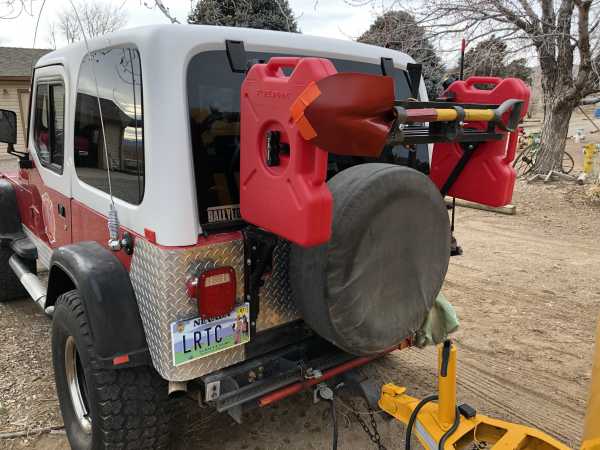
Contents of winch accessory kit.
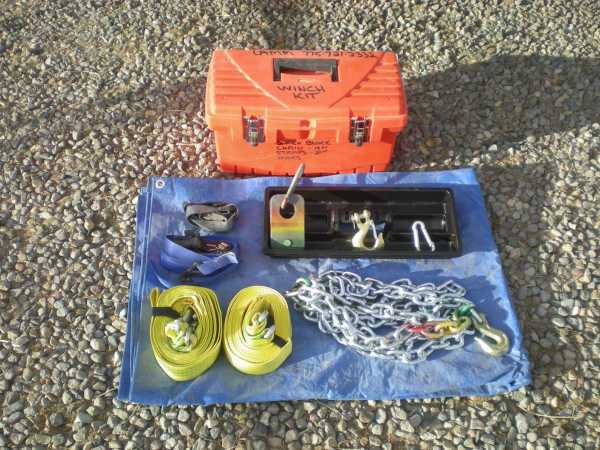
|
|
Use of the Electric Winch
|
|
The winch is primarily intended to be used to free stuck vehicles and to remove movable objects from roads and trails. It is not ordinarily intended for use during emergency horse and other large animal operations.
The winch should not be used to:
- Lift or drag a living animal.
- Upright an overturned horse trailer.
If an animal or an overturned trailer snags during a power winching operation, serious unintended consequences can result.
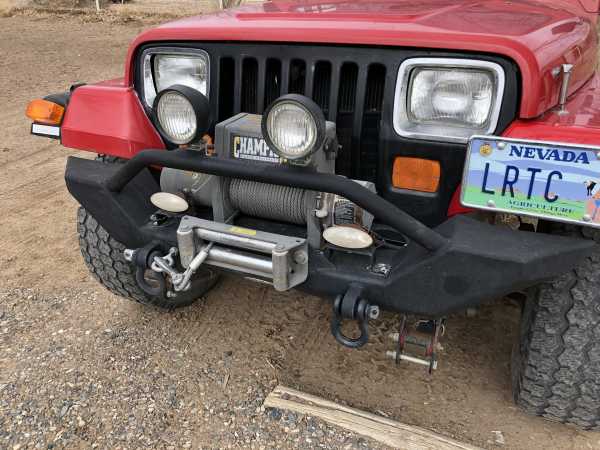
However there may be situations where it is safe and appropriate to use an electric winch as a braking device when there are insufficient equipment and manpower to provide controlled braking. Examples of such situations include controlling the speed of a horse being dragged down a steep slope on a Rescue Glide or controlling the rate in which an overturned trailer is uprighted. In these instances the winch would not be used to pull the Rescue Glide or trailer, but rather be used regulate the rate of movement based on the winch's unwinding drum speed.
In certain circumstances an extended winch cable can be used as a remote anchor point, subject to a number of safety considerations.
These issues are discussed later in this information sheet.
|
|
|
Emergency Winch Procedures
|
|
The following procedures should be followed any time an electric winch is being operated.
- Release the clutch to extend the winch cable.
- Use an appropriate strap to secure the item being winched or being controlled by the winch. Wrapping an object with the winch cable and hooking the cable back onto itself is dangerous and will likely damage the cable.
- Remember that the winch is rated at 8,500 Lbs. Most accessories are rated at 5,000 Lbs. Don't force things if the load appears to snag.
- Carabiners are not to be used in power winching operations. Appropriately rated screwlinks or shackles shall be used.
- Place a coat or similar object halfway along the cable run to prevent the cable from whipping back to the Jeep or to the rescuers in the event it or an accessory breaks.
- Use a snatch block pulley properly secured to a suitable fixed object any time a change of direction of the cable is required.
- Do not apply tension to the winch cable when anyone is in close proximity to the cable.
- The winch operator should stand in a safe place to avoid cable backlash in the event the load snags and equipment breaks. Sanding behind the driver's door is generally a safe location.
- The winch operator must have clear, unimpeded communication with the person directing the winching operation throughout the entire operation.
- At the end of the operation, the cable and accessories must be inspected for any damage and the cable be carefully rewound onto the winch drum to prevent loops and snags on the drum.
|
A proper layout. Strap around the load. Cable in a straight line.
Coat placed to prevent cable whip in the event the cable or a component breaks.
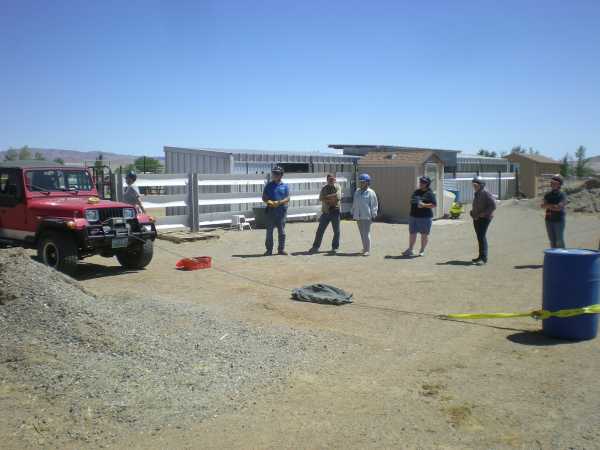
Operator protected by the door. Other persons clear of the cable "whip zone."
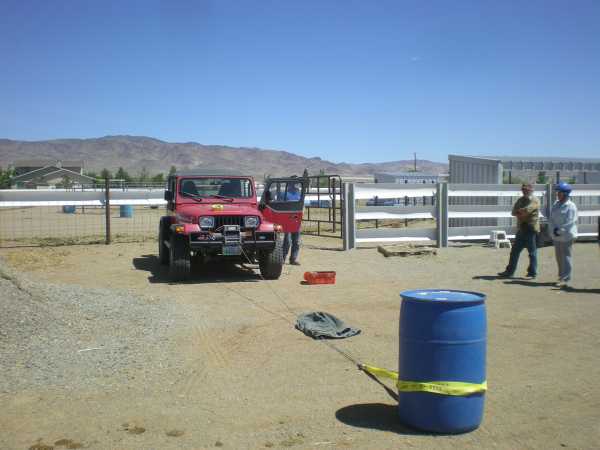
|
|
Using the Winch as a Brake
|
The winch may be used to control the rate of descent of an animal or object. In such instances all safety precautions applicable to any winching operation should be adhered to.
- Park the Jeep in as stable a position as possible with the winch facing the load and set the parking brake.
- Place the Jeep in 4-wheel drive, lock the front hubs using the dashboard control and set the transmission in Park. (This configuration will prevent all four wheels from turning.)
- Deploy tire chocks, in front of the front tires if practicable..
- Secure the Jeep to a fixed object using the tow strap and chain if possible.
- Extend the winch cable as necessary to connect to the load.
- Use snatch block pulleys to accommodate any needed changes of direction of the winch cable.
- Lock the winch clutch.
- Do not rewind the winch cable unless specifically ordered to do so to take up excessive cable slack. If ordered to take up slack, rewind in short segments and very cautiously so as not to move the load in the wrong direction.
- Maintain clear, unimpeded communication with the person directing the rescue to prevent the object being lowered from overtaking the rescuers.
- Once the operation is complete, rewind and inspect the cable and accessories as would be performed following a normal winching operation.
|
|
|
Using the Winch as an Extended Anchor Point
|
|
There may be instances where there is not an appropriate anchor point available in close proximity to a rescue operation and the terrain may render a 1-1-1 picket system impractical. In these instances it may be appropriate to park the Jeep in a stable location and extend the winch cable to use as an extended anchor point. During such operations the following guidelines should be followed.
- Park the Jeep in as stable a position as possible with the winch facing the load and set the parking brake.
- Place the Jeep in 4-wheel drive, lock the front hubs using the dashboard control and set the transmission in Park. (This configuration will prevent all four wheels from turning.)
- Deploy tire chocks, in front of the front tires if practicable..
- Secure the Jeep to a fixed object using the tow strap and chain if possible.
- Extend the winch cable as necessary to establish the extended anchor point.
- Use snatch block pulleys to accommodate any needed changes of direction of the winch cable.
- Lock the winch clutch.
- Unplug the winch control cable to prevent unintended operation.
- Raise the hood and remove the ignition keys to prevent unintended relocation of the Jeep. (Give keys to Safety Officer to hold if feasible.)
- Once the operation is complete, rewind and inspect the cable and accessories as would be performed following a normal winching operation.
NOTE: Winches can consume a great deal of power, particularly when operating under peak loads. Always winch with the engine running (to help reduce battery drain,) don't winch for long periods without intervals to allow the winch motor to cool and battery to recharge, and watch the battery voltage meter in the vehicle doing the winching to prevent drawing the battery voltage down so low that it stalls the engine.
|

The training information presented in these information sheets and guides is offered for illustrative and volunteer refresher purposes only. It is not a substitute for actual hands-on training.
|
Press Back to return to the page which brought you here
|


